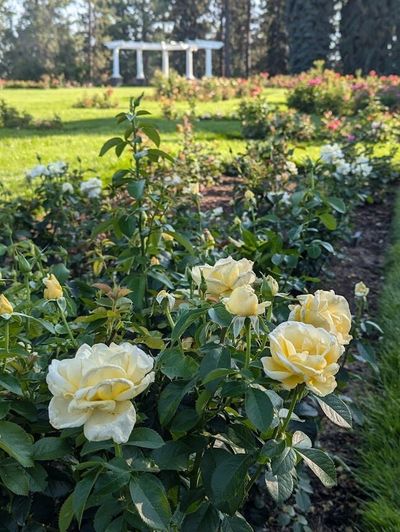Gardening: Start preparing roses for winter now

It’s been a tough year for roses.
The cold snap in late fall hit before the plants had a chance to go dormant. The subzero cold in January with no snow cover was another punch to the plants. Then it sort of warmed up and then it didn’t.
No wonder many roses didn’t leaf out until mid-June or just flat-out died. Now we are heading into fall and the next round of cold weather. What’s a rose grower to do?
“Stop deadheading rose flowers now and don’t fertilize after mid-August,” Cath Schulthies of the Rosarium said. “Spent flowers left on the bush signal the plant it’s time to finish the year’s growth cycle.”
Fertilizing late in the summer produces new green shoots that won’t harden off by the time the cold weather sets in. She added that roses still need steady moisture, so keep watering them until the weather cools or we get rain.
Roses start their dormancy cycle when daytime temperatures stay in the 50s, which is why we’ve had so much trouble the last couple of years. Our falls have gone from 60- to 70-degree days straight into 30-degree weather. As a result, the water in the plant cells hadn’t been drawn into the roots and froze. Because water expands when it freezes, the ice broke down the cell walls and that damaged or killed the plant.
Once the weather cools, it will be time to mulch roses to protect the roots and grafts from wild temperature swings over the winter. Grafted roses especially need to have the graft point protected where the root stock and the desirable part of the rose are joined. Grafted sections of the plant may not be as hardy as the root stock.
Schulthies also said that with the crazy weather pattern we’ve been seeing the past couple of years, it is advisable to mulch own-root roses
.
Mulching should be done around the beginning of November. You need to surround the base of the plant and its graft point with a foot of shredded pine needles, leaves or compost.
Pine needles are the best because they are loose enough to allow water to drain away from stems. The plants should be trimmed down by a third to prevent the canes from blowing in the wind and auguring holes in the mulch. The mulch can be removed in early April if the weather has warmed. If not, wait a couple of weeks.
Blackened canes should be cut back to green wood above the graft. Blackened canes on own-root roses can be cut to the ground because the roots will generate new ones.
Once new leaves begin emerging, it’s time to apply fertilizer. If a plant doesn’t leaf out quickly, as was the case this year, be patient and wait. If the plant doesn’t show signs of life by July, remove it.